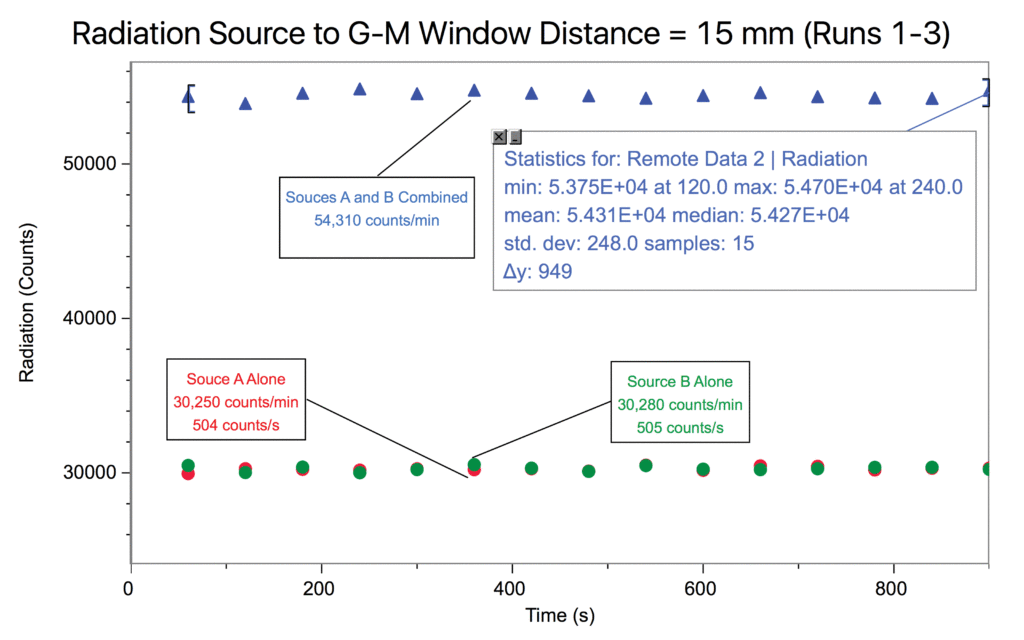Frequent newsletter contributor Richard Born, a professor emeritus at Northern Illinois University, developed an experiment that extends the common uses of Vernier sensors. Geiger tubes, such as those used in the Vernier Radiation Monitor, all have a common behavior in that the tube is briefly insensitive to a second event that arrives quickly after another event; that is, if two events arrive within too short an interval, the second event is missed. The duration of this interval is known as the resolving time.

In this graph, the counts per interval for the sources A and B were both around 30,000 counts/s, but together the counts were about 54,000 counts/s. Taken together, the count rate is less because the tube misses some counts, as they arrive too quickly.
Professor Born’s experiment determines that for this particular tube, the resolving time is a bit less than 200 μs.
Download the experiment for a full description, including a reliable vendor for the radioactive sources used and sufficient information to perform your own resolving time measurement.
Download Determining the Resolving Time of a Geiger-Mueller Tube »
